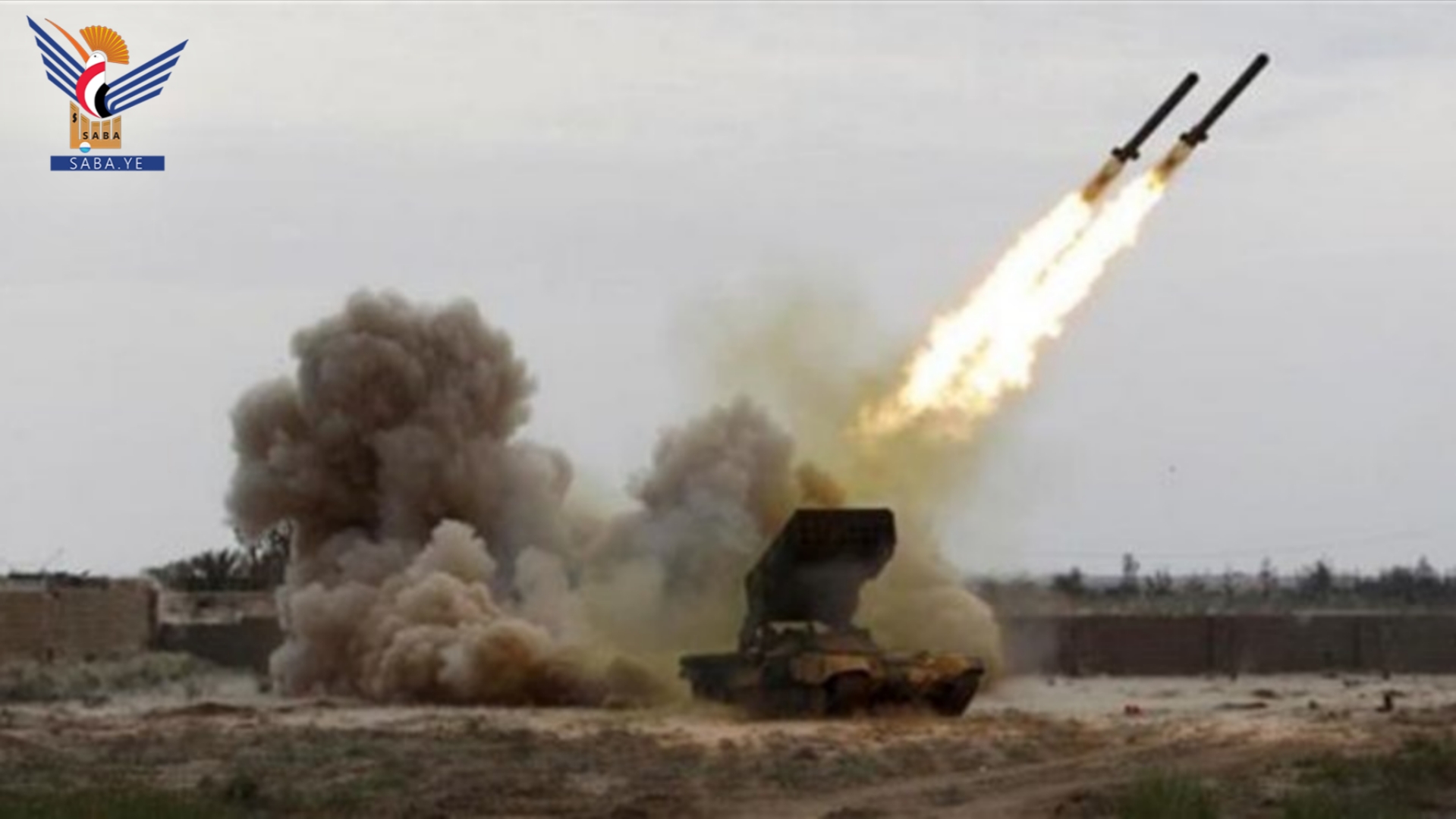Sana'a - Saba:
With a clear stance and carefully considered escalation, Sana'a continues to consolidate its field response equation in support of the Gaza battle. Over the past few hours, the Yemeni Armed Forces have witnessed a qualitative development in defensive and offensive operations, through a successful air defense response, the direct targeting of a ship that violated the embargo imposed on occupied Palestinian ports, and a concentrated strike on facilities deep inside the entity.
The air defense response marked a turning point in this process, as Yemeni air defenses confronted an Israeli attack on Al Hudaydah Governorate using locally manufactured surface-to-air missiles, this resulted in the failure of a large part of the operation and forced a number of aircraft to leave airspace without carrying out combat missions.
In parallel, the armed forces announced a joint naval operation targeting the Magic Seas, a ship belonging to a company that violated the naval embargo imposed on the entity, the operation involved two unmanned boats, five ballistic and cruise missiles, and three drones.
The operation resulted in a direct hit on the ship, causing it to leak water and sink. The crew was allowed to leave without being targeted, in a firm military message based on clear field standards and legal responsibility toward those working on non-combat vessels.
The ship had received repeated warnings from the Yemeni naval forces, according to the military statement. However, ignoring these warnings prompted the strike as part of the naval deterrence measures linked to the battle to break the siege on Gaza.
In addition, the armed forces carried out a missile and air operation targeting facilities within the entity, including Lod Airport, Ashdod Port, Ashkelon Power Plant, and Umm al-Rashrash Port, using hypersonic missiles and drones.
This synchronization of air and naval operations confirms advanced readiness and tight operational management, treating both tracks as a single, harmonious front, this level of coordination demonstrates Sana'a's ability to mount a escalating field response, imposing new equations of engagement that go beyond the enemy's traditional calculations.
With the escalation of operations and the expansion of the scope of the response, a negative echo began to reverberate within the Hebrew media, revealing the extent of the confusion caused by the Yemeni operations. Channel 14, the Israeli broadcaster, confirmed that the Israeli army was unable to stop the missile launches from Yemen, a clear admission of the failure of air deterrence against Yemeni missiles and drones.
This coverage intersected with other Hebrew media outlets reporting the occupation's shock at the development of Sana'a's air defenses, following their success in intercepting enemy aircraft during the attack on Hodeidah and forcing them to flee.
Some outlets quoted an Israeli military official as saying, "We did not expect Sana'a to reach this advanced level of air defense capabilities," adding that "some aircraft were almost hit the moment they entered airspace." The airstrikes continued for more than half an hour over the Red Sea.
This is a remarkable strategic development that has redrawn the maps of influence in the region. Regional observers believe that Sana'a is steadily advancing toward a direct actor in the Palestinian arena, from a supportive position to a military force with the tools to respond and impose a realistic cost on the continued blockade of Gaza.
Political analysts considered the recent operations to be part of a broader context that has extended since the start of the aggression, treating every naval breach or airstrike as part of a single arena, where the confrontation is waged using varying tools and calculated paths.
They believed that targeting ships collaborating with the occupation represents a practical transition to imposing field sanctions, and that the Yemeni armed forces now possess the ability to transform the waterways into effective pressure points directly linked to the blockade of Gaza.
The Armed Forces' statement confirmed that the targeted company's vessels are on the list of legitimate targets, opening the door to a calculated escalation that treats the sea as a front no less than the air and land, in a battle that assumes a regional character without going beyond the boundaries of Yemeni decision-making.
Capturing this sovereign stance, President Mahdi Al-Mashat paid tribute to the Armed Forces for their vigilance and high readiness to defend the country and deter aggressors, he praised the steadfastness of the Yemeni forces, who forced the Zionist enemy's aircraft to flee after they attempted to target civilian areas.
Extending the approach of response and firm resolve, President Al-Mashat reiterated Yemen's steadfastness in supporting Gaza until the blockade is lifted and the aggression halted, he emphasized that the enemy's threats will not weaken the popular will, and that Yemen is a battleground for final blows, not for show, as history has proven and the present bears out.
With this momentum, Sana'a is advancing confidently on the ground, sending its messages in a language of direct response in a time of Arab silence and official abandonment. Yemen is proving once again that it is Gaza's shield and sword, and that there is someone at sea who can strike a balance when the scales are upset. Whoever colludes with the siege of Palestine will not pass peacefully, and the passages that strangle Gaza will be closed on the heads of the criminals.
M.M

| more of (Reports) |




